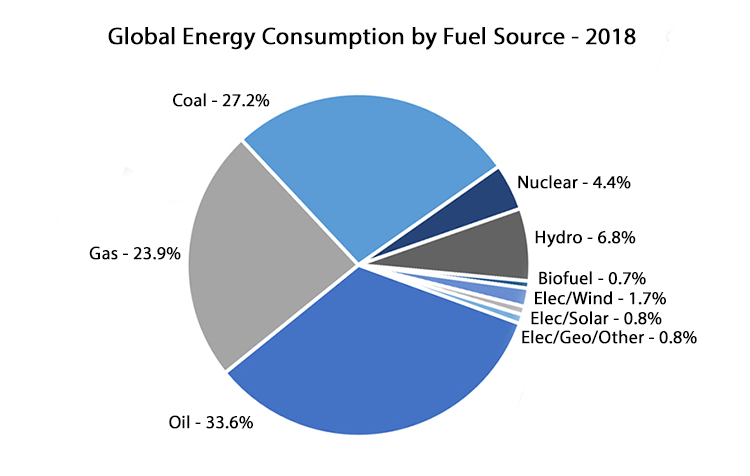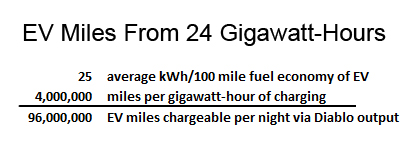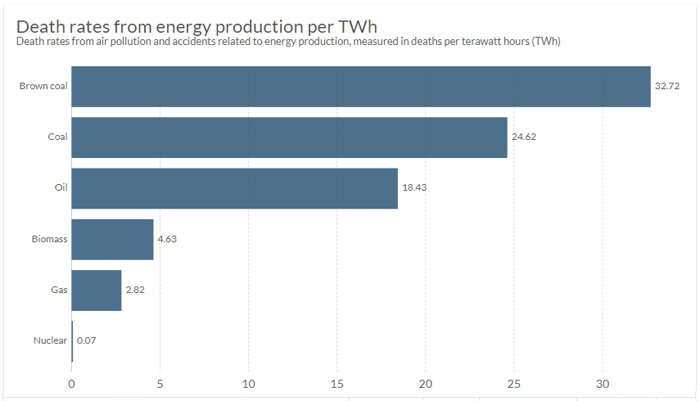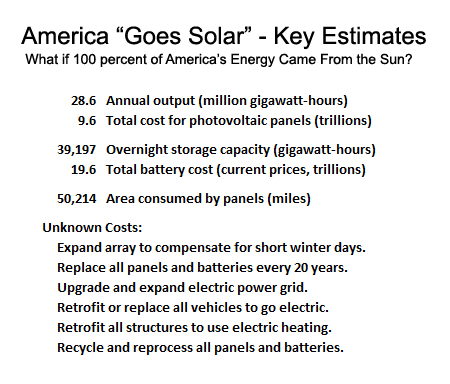Carbon Fundamentalists and War With China
Throughout America and Europe, there are now fanatical millions who believe CO2 emissions are an existential crisis of planetary proportions. This terrifies them. What is frightening to the rest of us is how easily they are manipulated.
Witness the ease with which opportunists direct the passions of this mob. Examples are endless and span the political spectrum, from corporate and financial special interests reaping obscene profits via mandated “green” products and “carbon emissions trading markets,” to stone cold communists riding through the gates of Western Democracies inside the Trojan Horse of environmentalism.
Could climate fanatics be motivated to support World War Three in the name of saving the planet? Why not? Wouldn’t you do whatever it takes to stop the people who are causing the end of the world? These climate crusaders already consider people who question the “climate emergency” to be “deniers,” and tens of thousands of them are already militants, willing to move beyond rhetoric. Meanwhile, filthy rich establishment grandees (example: Al Gore) nod and wink, and cash in on the madness.
The origins of “carbon fundamentalism” can be traced back to the end of the Cold War. In 1995, writing for International Affairs, Deepak Lai may have been the first to coin the term “Eco-fundamentalism.” Lai characterizes this “secular religious movement” as attempting to “impose constraints upon non-Western countries’ economic development in the name of environmental protection,” and claims this could eventually lead to a bloody conflict between the West and the rest of the world’s nations.
In 2006, The Globalist published a very brief critique entitled “The New Religion of Eco-Fundamentalism,” identifying three dangers of passionate environmentalism: First, the rhetoric had become extreme – even back then! Second, the movement is “hostile to capitalism and the market economy.” Third, and most profound, this is “the worst time to abandon our own traditions of reason and tolerance, and to embrace instead the irrationality and intolerance of eco-fundamentalism, where reasoned questioning of its mantras is regarded as a form of blasphemy.”
It wasn’t until 2008 that “carbon fundamentalism” was specifically called out as a dangerous new form of extremism. Appearing in Greenbiz and entitled “The Dangerous Rise of Carbon Fundamentalism,” the author expressed reservations about the reframing of climate change debate, wherein “academics who disagree about interpretation of data are [now] compared to Hitler or to Holocaust deniers.” As he put it, “one does not debate Hitler.”
Nor, moving to the present, can anyone who questions “climate change” be allowed public debate. For example, in September 2018, the BBC announced their intention to censor any reports by climate skeptics. Similarly, search Google under the term “climate skeptics.” Instead of finding “climate skeptics,” all you’ll find are websites “debunking” climate skepticism. These conscious attempts to stifle debate are terrible mistakes. More than ever, now should be the time for people to look for hidden agendas and ignored evidence on both sides of this debate over climate change; the scope, the causes, and the proposed policies we support as a result.
Carbon Fundamentalists and Chinese Expansion
By now the tactics of the carbon fundamentalists and the eclectic gang of political and corporate puppeteers who manipulate them are well established. Massive indoctrination in school, persistent attempts at fomenting panic in the media, protests and “direct action” around the world. We could be one big weather event away from seeing violent physical attacks on outspoken “deniers.” But what about the biggest offender of all, the entire nation of China?
China’s total CO2 emissions overtook the U.S. in 2007. By 2018, China’s total CO2 emissions became greater than the U.S. and Europe’s combined. The American press has taken notice. In between their alarmist coverage of hurricanes and tornadoes and their obsession with the Trump administration’s inadequate response to the climate crisis, they cover China. Sometimes the coverage is only obliquely holding the Chinese responsible, but other reports are becoming more critical.
In August 2019, Reuters circulated an article entitled “China CO2 emission targets at risk from U.S. trade war,” with the implication being that China is trying to cut their emissions, but we’re making that difficult because we’re finally challenging their corrupt trade practices. In February 2020, Bloomberg Green published an article entitled “China’s Virus Clampdown Is Cutting Emissions, But Not for Long,” focusing primarily on the virus, but making ominous reference to China’s rising CO2 emissions.
And then there’s the Belt and Road Initiative, China’s effort to build infrastructure around the globe, while simultaneously sinking financial and military hooks into the nations that participate. Notwithstanding the fact that America’s half-trillion dollar per year trade deficit with China is paying for this, there has been a flurry of articles bemoaning the impact all this infrastructure may have on the climate. From the Yale Press, February 2020, “The potential climate consequences of China’s Belt and Roads Initiative.” From Eco-Business, September 2019, “China’s Belt and Road Initiative could lead to 3°C global warming, report warns.” From Brookings, April 2019, “The critical frontier: Reducing emissions from China’s Belt and Road.”
As tensions with China rise, these articles will make their way from academic journals and green trade publications into the New York Times and ABC Nightly “News.” And when that happens, will it really be about the climate? Or will it merely be the next turn of the ratchet, as two civilizations prepare to collide?
You can believe, as many informed skeptics do, that more atmospheric CO2 is actually a net benefit to both planetary ecosystems and human civilization. But even so, this doesn’t excuse China’s shameful failure to regulate all the rest of the filth pouring out of their smokestacks and polluting the world around them – CO2 may be good, it may be bad, but atmospheric SO2, NO2, CO and O3 are all bad.
A geopolitical reckoning with China is inevitable. China’s regime isn’t smiley face fascism, or soft fascism. Hiding behind deception and a blizzard of money to buy positive press, China today has a full blown fascist regime of the German Nazi variety; racist, nationalist, militaristic, expansionist.
The litany of repressive evil and high-tech enslavement practiced by the Chinese regime is well documented. None of the nations surrounding China welcome its growing influence. The people who support China, or apologize for China – from universities in America to political forums in the Philippines – are almost invariably getting paid by China.
There is a great irony at work here. On one hand, America’s embrace of carbon fundamentalism undermines everything that makes America great – economic freedom, economic growth, land development, energy development, expansion and upgrades of critical infrastructure, and even freedom of speech and tolerance for diverse opinions. This benefits China, since none of these concerns slow them down. But on the other hand, it might eventually be carbon fundamentalism that drives Americans to support a blockade of China, rationing its access to fossil fuel. Needless to say, this would not benefit China.
How fascinating that carbon fundamentalism might actually be the latest expression of Western imperialism, relentlessly thwarting the aspirations of non-Western nations, allegedly to save the planet. But when it comes to relations with China, carbon fundamentalism merely adds additional moral vigor – misplaced or not – to the case for Western Imperialism to counter Eastern Imperialism. With China, the options are containment, capitulation, or war.
This article originally appeared on the website American Greatness.
* * *

Edward Ring is a contributing editor and senior fellow with the California Policy Center, which he co-founded in 2013 and served as its first president. He is also a senior fellow with the Center for American Greatness, and a regular contributor to the California Globe. His work has appeared in the Los Angeles Times, the Wall Street Journal, the Economist, Forbes, and other media outlets.
To help support more content and policy analysis like this, please click here.












